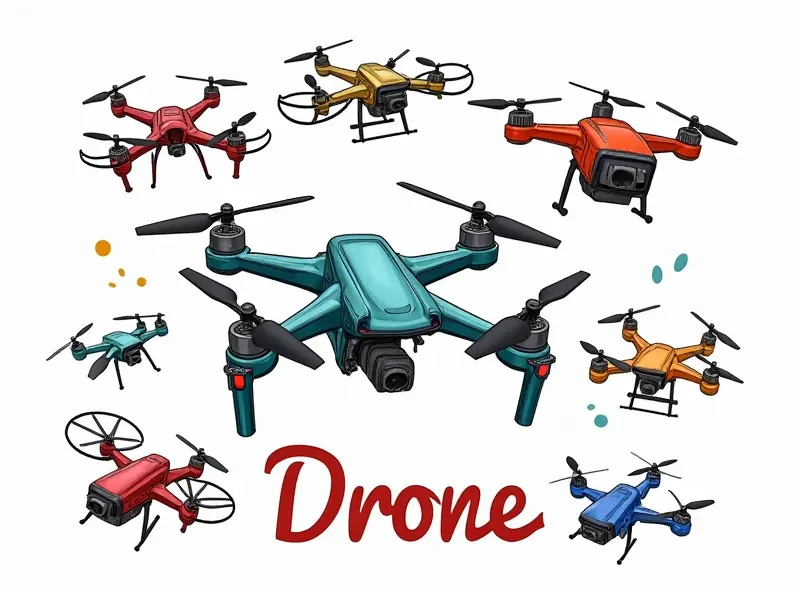Basic drone safety precautions

Stay Safe in the Sky with These Drone Tips
Welcome to your ultimate guide on staying safe while flying drones. As more and more people take up this exciting hobby, it's crucial to understand how to fly safely and responsibly.
Fly Safely: Your Ultimate Drone Guide
Before you start your drone journey, familiarize yourself with the basics of drone safety. This guide will cover everything from understanding regulations to practical tips for safe operation.
Essential Drone Safety Tips for Beginners
If you're new to drones, here are some essential safety guidelines that every beginner should know:
- Read the Manual: Every drone comes with a user manual. Take time to read it thoroughly.
- Check Weather Conditions: Avoid flying in windy or rainy conditions as they can affect your drone’s stability and performance.
- Avoid Obstacles: Keep an eye out for trees, buildings, power lines, and other potential hazards.
- Fly Within Line of Sight: Always keep your drone within visual range to maintain control over it.
- Lights at Night: Use lights or reflective markers on your drone when flying in low light conditions.
Top 5 Must-Know Drone Safety Rules
The following five rules are paramount for safe and legal drone operation:
- Register Your Drone: In many countries, you must register your drone with the relevant aviation authority.
- Avoid No-Fly Zones: Stay clear of airports, military bases, and other restricted areas.
- Height Limitations: Keep your drone below 400 feet (122 meters) to avoid interfering with manned aircraft.
- Privacy Concerns: Be mindful of privacy laws when capturing images or videos of people and property.
- Emergency Protocols: Know how to perform basic troubleshooting like restarting the drone’s software in case of technical issues.
Protect Yourself and Others: Drone Safety Basics
Your safety, as well as that of others around you, is paramount. Here are some fundamental practices:
- Wear Protective Gear: Use gloves to protect your hands during handling.
- Know Your Battery Limits: Understand the flight time and battery capacity of your drone.
- Inspect Before Flight: Regularly check for any damage or loose parts before each flight.
- Use GPS Locks: Enable GPS locks to maintain stability and prevent unwanted movements.
Avoid Mishaps: Critical Drone Safety Measures
Mishaps can happen, but with these measures in place, you can minimize the risk:
- Carry a Toolkit: Always have a toolkit for quick repairs or adjustments.
- Backup Batteries: Bring extra batteries to ensure continuous operation during long flights.
- First Aid Kit: Carry a first aid kit in case of minor injuries.
Stay Legal & Safe: Basic Drone Operation Tips
To stay on the right side of the law and maintain safety, follow these tips:
- Licensed Pilot? If required by your country’s regulations, obtain a remote pilot license.
- No Fly Zones: Use apps like Drone Zone or B4UFly to check for no-fly zones and restricted areas.
- Flight Logs: Keep detailed records of your flights, including dates, times, locations, and purposes.
Keep Flying Fun and Safe: Essential Drone Rules
Making sure your drone flying experience is both enjoyable and safe involves adhering to these rules:
- Flight Range: Stay within the recommended flight range of your drone.
- Battery Management: Monitor battery levels closely; low batteries can lead to unexpected crashes.
- Visual Obstacles: Use a third-person view or FPV goggles to enhance visibility and control.
Prevent Accidents: Key Drone Safety Protocols
To prevent accidents, follow these key safety protocols:
- Regular Maintenance: Perform regular maintenance checks on your drone’s components.
- Software Updates: Keep the firmware and software of your drone up to date for optimal performance.
- Emergency Landings: Know how to perform emergency landings in case of sudden power loss or signal disruption.
Fly Smart, Fly Safe: Drone Essentials
To ensure you fly smart and safe, here are some essential practices to follow:
- Flight Planning: Plan your flights in advance, considering weather conditions, location, and time of day.
- Communication: Stay informed about any changes or updates to drone regulations through official channels.
- Community Participation: Engage with the drone community for tips, advice, and support.
First-Time Flyers: Essential Drone Safety Measures
If you're a first-time flyer, here are some crucial safety measures to keep in mind:
- Practice Makes Perfect: Start by practicing indoors or in an open field with minimal obstacles.
- Battery Charging: Ensure your drone is fully charged before taking it out for a flight.
- Emergency Procedures: Learn basic emergency procedures to handle unexpected situations calmly and effectively.
Conclusion
Flying drones can be an exhilarating experience, but safety should always come first. By following the tips and rules outlined in this guide, you'll not only protect yourself but also ensure a positive flying experience for everyone involved. Stay informed about regulations, practice good maintenance habits, and always prioritize safety over thrill.

